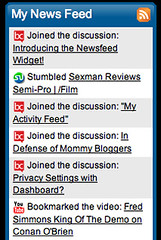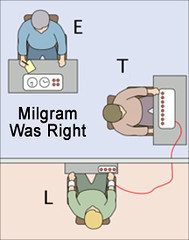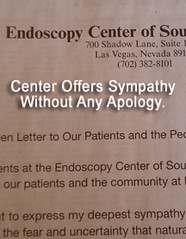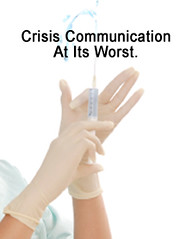There are two kinds of people who have a higher propensity to get into car accidents. Those who never think they will and those who always think they will.
Bear Stearns was driving too fast for its own good, lending over 30 times the value of its $11 billion in equity. There was bound to be an accident. The question being asked now is how many other firms were driving just as fast as this global investment banking, securities trading, and brokerage firm, founded in 1923.
For those financial experts and media outlets that have been predicting a recession for more than two years, they say everybody. Maybe they are right. Some say it’s the accident that singles the market has already bottomed out.
Regardless, the severity of the Bear Stearns sell off cannot be underestimated. Had it not been for JPMorgan Chase and the Federal Reserve Bank of New York stepping in late Friday with a financial rescue package followed by an announcement that JP Morgan would acquire Bear Stearns, some say it would have shaken the foundation of global financial markets.
It also provides a hint at just how much of the economy is based on perception.
JPMorgan is paying about $2 a share for a company with a book value of $84 a share, despite trading for as little as $30 per share at the close on March 14. Bear Stearns shares fell $26.32, or 87.7 percent, to $3.68 today.
Last month, after a Reuters reporter asked Bernard Connolly, global strategist at Banque AIG in London, to hypothesize what the U.S. could do to stave off a “depression” as great as 1930s. Some people speculated that he was predicting another Great Depression because that’s how the story read. I didn’t see it that way.
However, I did start to wonder. How much influence does media and social media have in creating a self-fulfilling prophecy, eg. if you yell fire in a room, people tend to react as if there is a fire, even when there is not a fire.
So I asked the question online and off: To what degree is media/new media/communication influencing consumer confidence and possibly contributing to a recession?
Most answers point in same direction. While the importance of consumer confidence varies from modest to extreme, it seems mainstream media may have less, not more, influence on the public. Perhaps that’s why two opposite answers both ring true at first blush.
“The influence of the self-fulfilling prophecy is all-powerful, and is one of the most insidious dangers that we face as a media-driven society,” offered Richard Telofski, president of The Kahuna Content Company, Inc., who recently wrote about the importance of consumer trust during a recession.
“A recession is a fundamentally economic event, fueled by a number of factors each with a different weight,” offered Nevada State Senator Bob Beers. “Communications rapidity is one, but not a major one. Or, in other words, a recession happens regardless of the amount of attention it gets.”
In truth, most discrepancies between media perception and economic reality are tied to definitions. Newspapers tend to define a recession as a decline in the Gross Domestic Product (GDP) for two or more consecutive quarters; whereas the National Bureau of Economic Research tends to define it as the time when business activity has peaked and begins to fall until it bottoms out.
The difference is enormous, which is why it always appears as if the media calls for a recession long before most economists, and most economists seem to call it after the fact. But does it even matter?
Yes and no. This time around, it seems obvious that the housing/mortgage market was a major catalyst for an economic slowdown, especially in cities where the new housing market plays a significant economic role. However, media coverage in some markets may have deepened the troubled.
For example, as a resident of one of the worst housing markets in the country, with prices falling about 15 percent over the last 13 months, it’s easy enough to see some correlation. The reporting may have contributed to the speed that investment homes were quickly put up for sale, adding even more inventory to already overly-saturated market with a high disposition for non-performing subprime mortgages and overbuilt new home market. It was clearly not the cause, but added fuel to the fire, much like the sell off of Bear Stearns stock.
Equally interesting from the answers I received was the suggestion that media has a predisposition for negative news whereas social media would be more inclined to report a truthful personal impact. Even if that were true, one wonders how much opinion can be trusted and by whom. Ask different people and you’ll always get different answers.
According to the results of a Harris Interactive poll, consumer confidence seemed resistant to media predictions despite the crisis, depending on age, region, and household income.
• People in the South are more optimistic (35%) while those in the East are least optimistic (24%).
• People with a household income of more than $75k are more optimistic (46%) than those earning than $35k (34%).
• People ages 18-43 (46-50%) are more optimistic than those 44+ (38%).
These numbers do not overwhelming point to optimism on any level, but it’s interesting how different demographics respond to the same question. In addition, it seems more likely people will be able to find what they are looking for: there are ample experts who advise on opposite ends of the spectrum.
For most companies, however, it makes little sense to launch preemptive scaling, wait it out, or hedge guesses against the growth. Those actions can create self-fulfilling prophecies when the fundamentally economic events occur, not unlike an accident.

Bear Stearns was driving too fast for its own good, lending over 30 times the value of its $11 billion in equity. There was bound to be an accident. The question being asked now is how many other firms were driving just as fast as this global investment banking, securities trading, and brokerage firm, founded in 1923.
For those financial experts and media outlets that have been predicting a recession for more than two years, they say everybody. Maybe they are right. Some say it’s the accident that singles the market has already bottomed out.
Regardless, the severity of the Bear Stearns sell off cannot be underestimated. Had it not been for JPMorgan Chase and the Federal Reserve Bank of New York stepping in late Friday with a financial rescue package followed by an announcement that JP Morgan would acquire Bear Stearns, some say it would have shaken the foundation of global financial markets.
It also provides a hint at just how much of the economy is based on perception.
JPMorgan is paying about $2 a share for a company with a book value of $84 a share, despite trading for as little as $30 per share at the close on March 14. Bear Stearns shares fell $26.32, or 87.7 percent, to $3.68 today.
Last month, after a Reuters reporter asked Bernard Connolly, global strategist at Banque AIG in London, to hypothesize what the U.S. could do to stave off a “depression” as great as 1930s. Some people speculated that he was predicting another Great Depression because that’s how the story read. I didn’t see it that way.
However, I did start to wonder. How much influence does media and social media have in creating a self-fulfilling prophecy, eg. if you yell fire in a room, people tend to react as if there is a fire, even when there is not a fire.
So I asked the question online and off: To what degree is media/new media/communication influencing consumer confidence and possibly contributing to a recession?
Most answers point in same direction. While the importance of consumer confidence varies from modest to extreme, it seems mainstream media may have less, not more, influence on the public. Perhaps that’s why two opposite answers both ring true at first blush.
“The influence of the self-fulfilling prophecy is all-powerful, and is one of the most insidious dangers that we face as a media-driven society,” offered Richard Telofski, president of The Kahuna Content Company, Inc., who recently wrote about the importance of consumer trust during a recession.
“A recession is a fundamentally economic event, fueled by a number of factors each with a different weight,” offered Nevada State Senator Bob Beers. “Communications rapidity is one, but not a major one. Or, in other words, a recession happens regardless of the amount of attention it gets.”
In truth, most discrepancies between media perception and economic reality are tied to definitions. Newspapers tend to define a recession as a decline in the Gross Domestic Product (GDP) for two or more consecutive quarters; whereas the National Bureau of Economic Research tends to define it as the time when business activity has peaked and begins to fall until it bottoms out.
The difference is enormous, which is why it always appears as if the media calls for a recession long before most economists, and most economists seem to call it after the fact. But does it even matter?
Yes and no. This time around, it seems obvious that the housing/mortgage market was a major catalyst for an economic slowdown, especially in cities where the new housing market plays a significant economic role. However, media coverage in some markets may have deepened the troubled.
For example, as a resident of one of the worst housing markets in the country, with prices falling about 15 percent over the last 13 months, it’s easy enough to see some correlation. The reporting may have contributed to the speed that investment homes were quickly put up for sale, adding even more inventory to already overly-saturated market with a high disposition for non-performing subprime mortgages and overbuilt new home market. It was clearly not the cause, but added fuel to the fire, much like the sell off of Bear Stearns stock.
Equally interesting from the answers I received was the suggestion that media has a predisposition for negative news whereas social media would be more inclined to report a truthful personal impact. Even if that were true, one wonders how much opinion can be trusted and by whom. Ask different people and you’ll always get different answers.
According to the results of a Harris Interactive poll, consumer confidence seemed resistant to media predictions despite the crisis, depending on age, region, and household income.
• People in the South are more optimistic (35%) while those in the East are least optimistic (24%).
• People with a household income of more than $75k are more optimistic (46%) than those earning than $35k (34%).
• People ages 18-43 (46-50%) are more optimistic than those 44+ (38%).
These numbers do not overwhelming point to optimism on any level, but it’s interesting how different demographics respond to the same question. In addition, it seems more likely people will be able to find what they are looking for: there are ample experts who advise on opposite ends of the spectrum.
For most companies, however, it makes little sense to launch preemptive scaling, wait it out, or hedge guesses against the growth. Those actions can create self-fulfilling prophecies when the fundamentally economic events occur, not unlike an accident.































